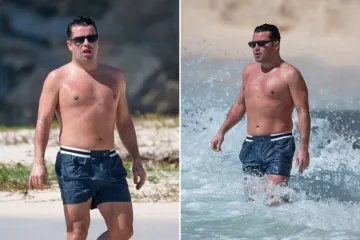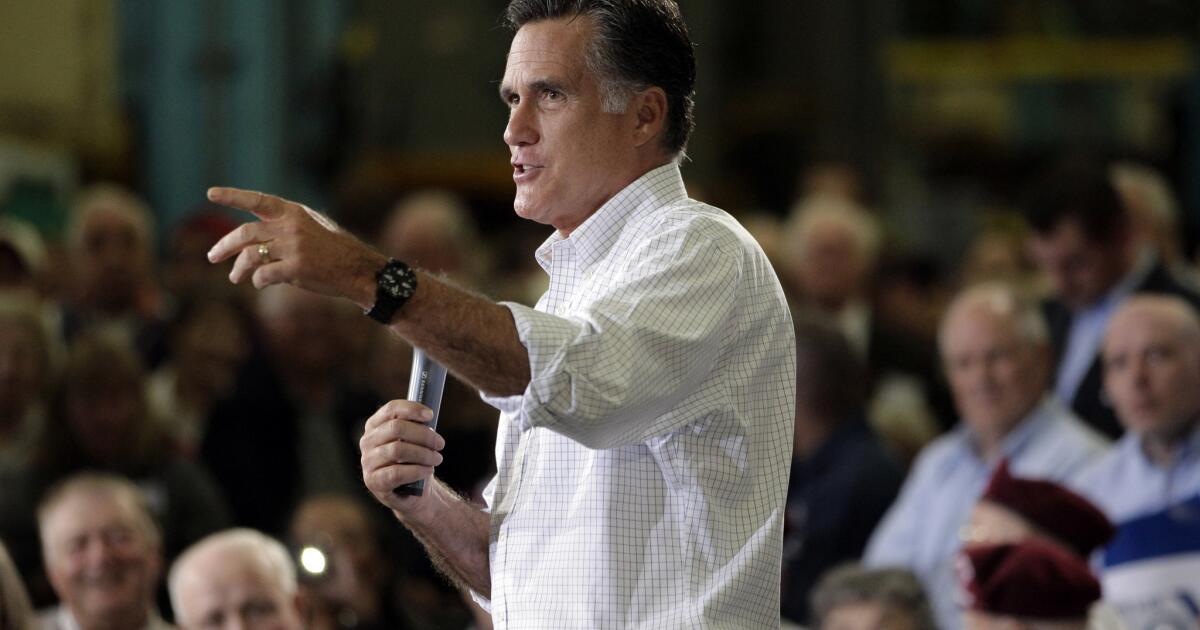Why This California-Based Company Could Reward Patient Investors
This company pays a 5.4% yield that is growing consistently.
This is an uncertain world and there are very few sure things. As Ben Franklin once observed, “nothing is certain except death and taxes.” But I think investors can almost add a third thing to that item — the trusty real estate dividend stock Realty Income (O 1.10%) and its ability to keep paying investors, no matter what the market looks like.
Realty Income is perhaps the most reliable dividend stock you can find. And it’s a well-deserved mantle. Realty Income just declared its 664th consecutive monthly dividend since the company was founded in 1969 — a streak that goes back more than 55 years. The company has also increased its dividend 132 times in that period, giving Realty Income shareholders a rare blend of growth and income.
This California-based real estate investment trust (REIT), is a no-brainer dividend stock to buy, and is a perfect investment for anyone looking to build their dividend portfolio over a long period of time.
About Realty Income
Realty Income is based in California, but it has a massive presence. The company has 15,600 commercial properties, located in every U.S. state and much of Europe. Realty Income’s customers represent 91 separate industries and include more than 1,600 clients.
And most importantly, the company’s portfolio has an occupancy rate of 98.5% — meaning that Realty Income is assured of a consistent revenue stream. That’s how it can afford to pay a consistent, reliable monthly dividend. Industries the company leases property to include grocery stores, convenience stores, home improvement stores, dollar stores, restaurants, drug stores, health and fitness centers, and more.
The company also diversifies its portfolio, which means a catastrophic failure in an industry or by a single business won’t hurt its operations. Convenience store chain 7-Eleven is the biggest tenant for Realty Income, and even then it’s only a 3.4% weighting.
|
Top 10 Clients |
Portfolio Weighting |
|---|---|
|
7-Eleven |
3.4% |
|
Dollar General |
3.2% |
|
Walgreens |
3.2% |
|
Dollar Tree |
2.9% |
|
Life Time Fitness |
2.1% |
|
EG Group Limited |
2.1% |
|
Wynn Resorts |
2% |
|
B&Q |
2% |
|
FedEx |
1.8% |
|
Asda |
1.6% |
Data source: Realty Income. Data as of June 30, 2025.
Realty Income stock performance
Unsurprisingly, real estate stocks haven’t done well for much of the year. The S&P 500 real estate sector as a whole is up only 4%, thanks to the weak housing market and high interest rates that make borrowing more expensive. But Realty Income has been able to shake off those pressures. The stock is up 11% on the year, and when you calculate the total return of reinvesting dividend payments, the return is more than 15%.
The company recorded $1.41 billion in revenue in the second quarter, up from $1.34 billion a year ago. Income was down, however, thanks to borrowing costs — the company recorded $196.9 million and $0.22 per share versus $256.8 million and $0.29 per share a year ago.
Realty Income lowered its full-year guidance, with net income now expected to be $1.29 to $1.33 per share, from previous guidance of $1.40 to $1.46 per share.

Image source: Getty Images.
The case for Realty Income
There’s nothing flashy about this stock. But that’s fine — not everything in your portfolio needs to be a shiny new toy. Realty Income’s strength comes with its consistency and long-term growth window.
An investment 10 years ago in Realty Income would give you $20,270 today, assuming that you reinvested all those dividends back into your stock. Had you pocketed the money, you’d still have $12,880 — which all goes to show the power of compound interest.
And remember, because Realty Income is a REIT, it’s required by law to disburse 90% of its profits back to shareholders (the current yield is 5.4%). Because it’s a monthly payout instead of a quarterly check, investors get the proceeds quicker, and those funds can work for them rather than working for Realty Income.
If you are an income investor, you really can’t beat Realty Income for its business plan, diversification, and combination of growth and income. If you are a patient investor with a long-term view, Realty Income is a perfect dividend stock.
Patrick Sanders has no position in any of the stocks mentioned. The Motley Fool has positions in and recommends Realty Income. The Motley Fool recommends FedEx. The Motley Fool has a disclosure policy.
Pratika Rawal: How a father’s dream led to Women’s World Cup
As Pratika moved up through the age groups, she caught the attention of former India player Deepti Dhyani, who became her coach.
“I saw her play a few drives and realised she had the capabilities. Most state-level players have talent; the challenge is transforming it for professional cricket. That’s where we as coaches step in,” Deepti says.
“She stood out because whenever you asked her to work on something, she would tick every box, even if you weren’t watching.”
Deepti also emphasised fitness, something Pratika had embraced since childhood.
“We often think gym work means building bulky muscles, but it’s really about staying injury-free. Thankfully, Pratika understood that well and worked on her fitness seriously,” says Deepti.
Even as cricket became her focus, Pratika didn’t neglect her studies. She pursued a degree in psychology, which helped her understand the mental side of the game.
“She was in ninth standard when she got interested in psychology, so she decided to study it in college,” says her father.
“In cricket, psychology plays a major role. When you’re batting, trying to read what a bowler is thinking or why they’ve set a certain field, it helps you dissect situations better. It’s been really useful for her.”
It’s that out-of-the-box thinking which gives Pratika a useful skill off the field: she can solve a Rubik’s cube.
“It has an algorithm to it,” Pratika said, in a social media video. “The centre pieces don’t move, so you need to move everything around those.”
Easy, or so Pratika makes it seem.
China Eastern Airlines to resume flights to India after five-year freeze | Aviation News
Commercial flights between the countries to restart as diplomatic thaw eases tensions over border clashes.
Published On 18 Oct 2025
State-backed China Eastern Airlines will resume Shanghai-Delhi flights from November 9, the airline’s website shows, as China and India resume direct air links amid a diplomatic thaw, largely triggered by aggressive United States trade policies, after a five-year freeze.
The flights will operate three times a week on Wednesdays, Saturdays and Sundays, the airline’s online ticket sales platform showed on Saturday.
Recommended Stories
list of 4 itemsend of list
China Eastern Airlines did not immediately respond to the Reuters news agency’s emailed request for comment.
India’s foreign ministry said earlier this month that commercial flights between the two neighbouring countries would restart after a five-year freeze.
The announcement followed Indian Prime Minister Narendra Modi’s first visit to China in more than seven years, for a summit meeting of the Shanghai Cooperation Organisation regional security bloc. The two sides discussed ways to improve trade ties, while Modi raised concerns about India’s burgeoning bilateral trade deficit.
India and China’s foreign ministries did not immediately respond to requests for comment on the Shanghai-Delhi flights.
India’s largest carrier, IndiGo, previously announced it would start daily nonstop flights between Kolkata and Guangzhou.
State-backed Guangzhou Baiyun International Airport said at the time of the IndiGo announcement that it would encourage airlines to open more direct routes, such as between Guangzhou and Delhi.
Direct flights between the two countries were suspended during the COVID pandemic in 2020 and did not resume after deadly clashes along their Himalayan border led to a prolonged military stand-off later that year.
Four Chinese soldiers and 20 Indian soldiers were killed in the worst violence between the neighbours in decades.
India and China’s diplomatic thaw comes amid US President Donald Trump’s increasingly belligerent trade polices.
The US president raised the tariff rate on Indian imports to a stiff 50 percent in September, citing the nation’s continuing purchases of Russian oil.
He also urged the European Union to impose 100 percent tariffs on China and India, ostensibly as part of his efforts to pressure Moscow to end its war in Ukraine.
UH-60 Black Hawk Cargo Drone With Clamshell Nose Breaks Cover (Updated)
Sikorsky has unveiled a new, fully uncrewed version of the Black Hawk helicopter with a completely transformed front end that swaps out the cockpit for clamshell doors. Depending on how it is configured, what has been dubbed the U-Hawk can move thousands of pounds of outsized cargo internally and slung underneath, deploy uncrewed ground vehicles, and fire dozens of “launched effects” like surveillance and reconnaissance drones and loitering munitions.
A U-Hawk demonstrator, converted from an ex-U.S. Army UH-60L, is on display at the Association of the U.S. Army’s (AUSA) main annual conference in Washington, D.C., which opened today and at which TWZ is in attendance. Sikorsky, now a Lockheed Martin subsidiary, also refers to the design as the S-70 Unmanned Aircraft System (UAS), with S-70 being the company’s internal model number for H-60 variants.
The U-Hawk leverages the company’s past work on a Pilot Optional Vehicle (OPV) version of the Black Hawk, which has been flying for years, as well as its MATRIX autonomy flight control software. Development of MATRIX first began more than a decade ago and was buoyed early on by support from the U.S. Defense Advanced Research Projects Agency (DARPA) through the Aircrew Labor In-Cockpit Automation System (ALIAS) program.

“A lot of our customers said, hey, I need to be able to move things into theater, and I need to be able to move them in mass. And a lot of the drones out there may be able to carry 100 pounds, may be able to carry 500 pounds,” Rich Benton, Sikorsky Vice President and General Manager, told TWZ and other outlets during a press call earlier this month. “We look introspectively, what do we have? Well, we actually have an autonomous Black Hawk today, our OPV, optionally piloted. But why couldn’t we just take the cockpit out of that and make that a UAS?”

“We conceived this idea [the U-Hawk], believe it not, at the last AUSA, talking to some of the folks from the Army and other services,” Igor Cherepinsky, Sikorsky Innovations Director, also told TWZ and other outlets during a separate call ahead of the opening of today’s conference. “We procured the [underlying UH-60L] aircraft towards the beginning of this year.”
It took Sikorsky roughly 10 months to go from “concept to reality,” according to a company press release. The goal is for it to take flight for the first time next year. The U-Hawk has, so far, been an internally funded effort.
The U-Hawk adaptation of the Black Hawk does do much more than simply remove the pilots and offers significantly greater capability than crewed versions for certain missions. The design also features a different hardware backend for the MATRIX autonomy package and a revised fly-by-wire control system compared to the previous OPV Black Hawk, which we will come back to later on.
Still, the most eye-catching features of the new uncrewed version are its new front section and revised internal arrangement.
“We have completely removed the cockpit, the pilot, and also the crew chief stations of the aircraft,” Ramsey Bentley, Sikorsky Advanced Programs Business Development Director, explained while speaking alongside Cherepinsky. “This gives us the entire cabin and cockpit area for either a logistics operation or mission support operations.”

Sikorsky says the U-Hawk will also be able to “self-deploy” out to a range of 1,600 nautical miles and have a total unrefueled endurance of 14 hours. The press release today also says the uncrewed Black Hawk can “carry internal fuel tanks for increased range or extended time on station,” but it is unclear if this is required to meet the stated range and endurance figures, although that seems likely. Increased range while carrying a useful payload still opens up significant new opportunities, especially for operations across the broad expanses of the Pacific, but also elsewhere.
Payload-wise, Sikorsky expects the uncrewed Black Hawk to be able to carry up to 7,000 pounds internally or 9,000 pounds slung underneath, or a mix of both up to a maximum rating of 10,000 pounds. The company says this is roughly in line with the payload capacity, by weight, of a standard crewed UH-60L. For helicopters, in general, the maximum allowable payload on any particular sortie is also heavily dependent on environmental factors like altitude and temperature.

The U-Hawk’s revised configuration gives it approximately 25 percent more physical space inside for cargo and/or other payloads compared to existing UH-60 variants. This is important as payloads often have dimensional restrictions, as well as weight-based ones. Some cargoes that would have been previously slung underneath could be carried internally, which would drastically increase the range at which they could be delivered.
“The payload, I think, is what really distinguishes this from competitors. … So one can start to imagine the missions that that U-Hawk can begin to solve,” Beth Parcella, Sikorsky Vice President of Strategy and Business Development, noted while speaking together with Vice President and General Manager Benton. “Everything from delivering swarms of drones, from launched effects ‘quivers,’ carrying cargo in a contested logistics environment, driving on and off uncrewed ground vehicles, operating in a counter-UAS function, [and] roll-on and roll-off of supplies.”
“So there’s a tremendous amount of flexibility with this aircraft,” she added.
When it comes to “launched effects,” or LEs, this is a catch-all term that the U.S. military currently uses to refer to uncrewed aerial systems that can be fired from other aerial platforms, as well as ones on the ground or at sea. Sikorsky and its parent company, Lockheed Martin, are currently using the Army’s requirements for three tiers of short, medium, and long-range launched effects as a baseline for the development of the launch ‘quivers’ and what gets loaded in them. LEs in all three categories could be configured to perform surveillance and reconnaissance and electronic warfare missions, as well as be employed as loitering munitions or act as decoys.

“What this quiver does is, depending upon the size of the launched effect, it’s able to hold 24 to 50 different launched effects in the back of the aircraft,” Bentley said. “The quiver is actually designed for what would be the Army short-range and medium-range-sized LEs. The long-range [ones] probably ends up going out on the [stub] wing, like you’ve probably seen [in] some other demonstrations.”

Bentley also noted that the quivers will be able to carry mixed loads of different types of LEs at once, including types developed by other companies.
Parcella did not elaborate on the potential “counter-UAS function” for the U-Hawk, but indicated that it could be tied to its launched effects capabilities. The U-Hawk might be able to carry other types of weaponry, as well as electronic warfare systems, that could be employed against hostile drones, as well as other targets.

As noted, general cargo-carrying is also envisioned as a key role for the uncrewed Black Hawk. Sikorsky says the U-Hawk will be able to carry up to four U.S. military-standard Joint Modular Intermodal Containers (JMIC), spread between the main cabin and slung underneath, compared to the two that existing Black Hawk variants can lug around today. It will also be able to carry a single one of the standard ammunition ‘pods’ used in the M270 Multiple Launch Rocket System (MLRS) and M142 High Mobility Artillery Rocket System (HIMARS), as well as a pair of Naval Strike Missiles (NSM) in their launch canisters, according to today’s press release. The Army operates both the M270 and M142. The Marine Corps has HIMARSs, as well, and is also fielding NSM in a ground-launched configuration.

The U-Hawk’s clamshell doors allow for the loading and unloading of cargo even while the rotors are still turning. There is also a folding ramp to help ease the process, as well as allow for the deployment of UGVs.

All of “this is designed to do direct support of the maneuver commander. So, as the Army is conducting an air assault, you would envision the U-Hawk flying ahead of the soldiers,” Bentley explained. “As the U-Hawk comes into the landing zone area, first it dispenses launched effects out of the sides of the aircraft, out of our launched effects quiver. And then it lands, it disembarks the UGV, and then the aircraft departs. And this is done ahead of any soldiers putting boots on the ground.”

“You’ve probably heard about Gen. [James] Rainey, the AFC [Army Futures Command] commander, talking about metal-on-metal first contact,” Bentley said. “This is Sikorsky focused on that commander’s need, the soldiers’ need, to put these launched effects, UGVs, and UAS in the battle space, ahead of us, putting soldiers in harm’s way.”
The U.S. Army and U.S. Marine Corps are also both especially interested in using vertical takeoff and landing-capable uncrewed aircraft for logistics missions, including the resupply of forces in higher-threat areas. The Marines are already pursuing a multi-tier family of Aerial Logistics Connector (ALC) platforms, and have started to field drones to meet the lowest-end Tactical Resupply Unmanned Aircraft System (TRUAS) requirement.
Bentley also said the company envisions U-Hawks performing non-military missions, including supporting wildfire fighting and disaster relief operations. A number of civilian operators already fly crewed H-60 variants in these roles.

Regardless of the missions it is configured for, Sikorsky is designing the U-Hawk to provide all of its capabilities with minimal training and sustainment requirements. Sikorsky says individuals without aviation-specific skill sets can be readily trained to operate the uncrewed Black Hawk via touchscreen tablet-like devices. The MATRIX system has a demonstrated ability to get platforms like the OPV Black Hawk between set waypoints in a highly autonomous manner.

“Upshot of this is that you can operate this aircraft with a minimally trained operator, and a tablet, if that’s what you want. We [are] obviously also providing a way to be integrated into [a] bigger airspace picture, be it civil or military airspace, where one can exercise more control over the aircraft,” Cherepinsky explained. “If you tell it to go from airport A to airport B, for example, and it knows it’s in civil airspace, it will take the right routes, follow the right civil procedures. If it knows it’s a military airspace, it will do what it thinks is right for the military airspace.”
“In some cases, [it] may not be what exactly — what you want. So, we’re providing this level of adjustable autonomy where you can have a local operator on the ground, for example, operating the aircraft as a crane, right, moving around the field, moving things around the field, loading the aircraft,” he added. “You can hand it off to a more central UAS command, where they have a lot more fine detail over … speeds, altitudes, and whatnot. It’s really, really up to our customer how they want to operate these vehicles.”

Sikorsky is also presenting U-Hawk as a very cost-effective option, even compared to what it previously demonstrated with the OPV Black Hawk.
“Our S-70 OPV aircraft has been flying for a number of years,” Cherepinsky said. “It’s optionally piloted. It’s [a] human-rated fly-by-wire system. It’s our autonomy system. It comes at a certain price point.”
He pointed out that many of the systems of the OPV demonstrator utilized available components sourced from existing suppliers rather than ones designed with that aircraft specifically in mind. This included the hardware used to run the MATRIX system, which he described as being more than what Sikorsky necessarily wanted or needed for that application. As he mentioned, the systems also had to meet standards for an aircraft designed to carry humans, which is not something U-Hawk has to take into account at present.
“On the U-Hawk, we actually did a lot more vertical integration,” according to Cherepinsky. “We designed our own vehicle management computers, our actuation, and the price point of the entire system, not just the aircraft, is much, much lower. As an example, our vehicle management computers are 10s of 1000s of dollars, not hundreds, as they are on a human-rated aircraft.”
The current cost proposition for the U-Hawks also includes savings from reusing existing UH-60L airframes. The U.S. Army has been steadily retiring these versions and selling them off as it acquires newer, more capable M variants. The Army had been working to bring some 760 L models up to an improved standard called the UH-60V, but axed plans for further conversions last year as part of a larger shakeup in the service’s aviation priorities. As such, hundreds more UH-60Ls are expected to become available in the coming years. Other older H-60s that could be turned into uncrewed versions might become available as other operators around the world begin upgrading their fleets, as well.

“We certainly can [build all-new U-Hawks]. It all depends on the economics and price point,” Cherepinsky said.
It is worth noting that the U.S. Army is currently envisioning future air assaults, especially in the context of a potential future high-end fight with China in the Pacific, stretching over distances beyond what the U-Hawk could cover. The ongoing war in Ukraine also continues to offer particularly good examples of how growing threat ecosystems are increasingly imposing significant operational limitations on the use of crewed helicopters. The pursuit of launched effects within the Army and elsewhere across the U.S. military directly reflects increasingly more capable and long-range adversary anti-air capabilities. The Army also notably canceled plans to acquire a Future Attack Reconnaissance Aircraft (FARA), which was set to be a crewed helicopter of some kind, last year, citing threat concerns and plans to focus more on uncrewed platforms.
“So, I’ll tell you up front, I can’t be specific on the things we’re doing to address survivability. And survivability has been an issue for aviation, for vertical aviation, for a long time,” Benton said during the previous press call in response to a direct question from this author about what might be in the works to help uncrewed and crewed Black Hawks address growing threats going forward. “We are leveraging the entire power of Lockheed Martin … what is [sic] the technologies that Lockheed Martin has and can bring to bear to provide survivability on those aircraft. Those are the things we’re continuing to look at.”

At the same time, crewed helicopters are not going away, and tradeoffs will have to be made. For many missions, the U-Hawk removes the biggest risk factor in terms of combat losses, a human crew, while also offering a significant boost in some capabilities. The uncrewed Black Hawk also proposes a way to do all of that at a lower cost that also leverages extremely well-established logistics and sustainment chains. This is particularly significant for the U.S. Army, which expects to continue flying H-60s on some level through at least 2070.
U-Hawks could also take over certain missions in lower-threat environments from crewed platforms, presenting the potential for additional operational flexibility and cost benefits. Being able to autonomously move even a few hundred pounds of critical cargo, such as spare parts, between far flung and remote locations separated by many hundreds of miles, without the need for a fully qualified aircrew, could be a boon even in lower threat areas. The fact that it can move much larger loads internally, without the range penalties of sling loading, is an even bigger sell. All this could be done without adding a new type to the Army’s shrinking helicopter fleet and leveraging the H-60/S-70’s global supply chain is also a very attractive factor, as well. Those same attributes underscore the sales potential of the uncrewed Black Hawk to non-military operators, too.
“We’re really excited. And honestly, some of us are thinking, gosh, why didn’t we think about this five years ago?” Parcella said on the press call earlier this month.
Update:
We got a walk-around tour of the U-Hawk on the floor of the Army Association’s symposium, check it out here.
Contact the author: [email protected]
X Factor winner Joe McElderry says he’ll be ‘eternally single’ as he opens up on doomed dating life
X FACTOR winner Joe McElderry says he’ll be ‘eternally single’ while opening up on his dating life.
The talented 34-year-old became a household name after he won the show in 2009, as a fresh-faced 18-year-old with Cheryl as his mentor.
But where his career has thrived, Joe’s not had the same success when it comes to dating.
Joe referred to himself as “eternally single” in a chat with The Sun, while adding: “I’ve been single for a very, very long time.
“And I mean I listen, I’m open to meeting somebody and I’d love to meet somebody, but I think dating is so hard now.
“Online dating is a minefield, and I don’t think people meet people unless it’s on dating apps now, which is crazy. It’s kind of sad in a way.”
Read More on Joe McElderry
And if he is to meet someone, they’d have to get the green light from his grandma Hilda.
Joe continued: “She’s a very good judge of character. You’ll know if she doesn’t trust somebody or she doesn’t like somebody.
“In our industry, you can come across some dodgy people, but she can call it out in seconds of somebody walking in a room and I’m like, that’s a wise woman.”
Joe shares a very close bond with his grandma Hilda, with the pair set to do a live recording of their popular podcast That’s Ridiculous, on October 23rd.
The booked and busy star is also delighting audiences across the North East with his autumn tour, culminating in his one-night-only Festive Party at Newcastle’s O2 City Hall on 1st December.
Sharing more about tour life, the Climb singer told us: “It’s a very short tour in comparison to what I normally do, but I’ve been on the road with Joseph the musical since January.
“We finished that in August, and the original plan was to kind of just have October off, and chill out, and then I got halfway through the year and I was like, I feel like I’m gonna miss touring.
“So we managed to kind of shoehorn in about 10 shows, it’s been great. We’ve done three of them already and it’s been lovely and it’s my favourite thing to do, just to be in the room with people that support me and know my music.”
The star shared his pre-show ritual which he has stuck by for years – but admits it’s “not for everyone.”
Joe continued: “The weirdest thing I do is I gargle bicarbonate of soda.
Joe’s tour dates
Fans still have the chance to catch Joe live throughout October, with highlights including his special That’s Ridiculous live podcast with Grandma Hilda at The Customs House in South Shields.
- 23 October* – Customs House, South Shields
- 24 October – Customs House, South Shields
- 25 October – Customs House, South Shields
- 26 October – Playhouse, Whitley Bay
“Years ago, a wonderful supporter of mine sent a letter in and he was saying how it’s like an remedy, and so I read this letter and I thought that sounds a bit strange, but I’m going to give it a go and honestly, I mean I’m not a doctor, so if anybody reads this as advice, do it at your own risk, but it’s like a miracle cure for the voice, it’s like a natural antiseptic.
“You don’t swallow it or anything, it’s just a gargle on your voice. But I swear by it. I have it half an hour before the show. I sometimes have it in the interval of a show. And I even have it in a quick change if I’m struggling on a show day.”
The 34-year-old admits huge singers have taken his advice in the past after asking what could work to help their vocal chords.
“It does taste disgusting, but honestly not one person has ever come back and gone, #that didn’t work,’” Joe added.
Tickets for both the tour and the festive show at O2 City Hall are available via Joe’s official website and venue box offices – www.joemcelderryofficial.com.
3 High-Yield Dividend Stocks to Buy With $1,000 and Hold Forever
If you are looking for reliable income in today’s lofty market, this trio should provide you with the sustainable yields you seek.
The S&P 500 index (^GSPC 0.53%) has a miserly yield of just 1.2% or so today. That’s a number that you can beat pretty easily, but you want to make sure you do it with reliable dividend stocks. There are some companies that have huge yields, but the risk involved isn’t worth it.
That’s why you’ll probably prefer to buy (and likely hold forever) companies like Realty Income (O 1.13%), Prologis (PLD 2.40%), and UDR (UDR 0.50%). Here’s a quick look at each of these high-yield dividend stocks.
1. Realty Income is boring, which is a good thing
Realty Income is the largest net lease real estate investment trust (REIT) you can buy. It owns over 15,600 properties and has a market cap that is more than three times larger than its next-closest peer. Add in a dividend yield of 5.4% and a 30-year streak of annual dividend increases and you can see why dividend investors would like this stock.
The key, however, is how boring a business it is. It starts with the net lease approach. A net lease requires the tenant to pay for most property-level expenses. That saves Realty Income cost and hassle, leaving it to, in a simplification of the situation, sit back and just collect rent. On top of that, the company’s primary focus is retail properties, which are fairly easy to buy, sell, and release if needed. But that isn’t the end of the story, either, since Realty Income is also geographically diversified, with a growing presence in Europe.
Slow and steady is the name of the game for Realty Income, which makes sense given that the REIT has trademarked the nickname “The Monthly Dividend Company.” This high yielder isn’t going to excite you, but that’s basically the point. Investing $1,000 into Realty Income will leave you owning roughly 16 shares.
2. Prologis is building from within
Prologis is another industry giant, this time focused on the industrial asset class. It is one of the largest REITs in the world, with a market cap of more than $100 billion. (It’s about twice the size of Realty Income, which has a roughly $50 billion market cap.) The dividend yield is around 3.5%, which isn’t nearly as nice as what you’d get from Realty Income, but there’s more growth opportunity. To put a number on that, Realty Income’s dividend has grown 45% or so over the past decade while Prologis’ dividend has increased by over 150%.
Like Realty Income, Prologis offers global diversification. It has operations in North America, South America, Europe, and Asia, with assets in most prominent global transportation hubs. It has increased its dividend annually for 12 years, with a high likelihood of years of dividend growth ahead. That’s because the REIT has a $41.5 billion opportunity to build new properties on land it already owns. What’s exciting now is that the dividend yield happens to be near the high end of the range over the past decade, suggesting today is a good time to jump aboard. A $1,000 investment will allow you to buy eight shares of the stock.
3. UDR is diversified and provides a basic necessity
UDR is an apartment landlord, offering the basic necessity of shelter. That’s not going to go out of style anytime soon. The company underwent a painful overhaul a few years back when it sold a portfolio of lower quality apartments, leaving it focused on its remaining and better-positioned assets. This was a good move for the REIT, but it led to a dividend reset (the painful part for shareholders). However, the dividend has been growing ever since, with an annual streak that’s now up to 16 years. There’s no reason to believe another cut is in the cards.
What dividend lovers get now, however, is fairly attractive. For starters, the portfolio is well-diversified by geographic region in the United States and by quality (A and B level assets only, the fixer-uppers it once owned are gone). Technology has been an increasingly important aspect of the business, with UDR working to use the internet to lease and serve tenants more nimbly. Essentially, UDR is a great way to get diverse exposure to apartments.
UDR’s dividend yield is 4.7% right now, which is fairly high for the REIT and well above the REIT average of around 3.8%. If you want to own a REIT that provides a basic necessity, UDR is worth looking at today. A $1,000 investment will get you roughly 27 shares.
Three high-yield, buy-and-hold options for your portfolio
If you are focused on yield, Realty Income is likely to be the most appropriate choice for your portfolio. If you like dividend growth, take a look at Prologis. And if you are fond of companies that provide basic services that everyone needs, that would be UDR. All three have lofty yields and are worth buying and holding for the long term.
Reuben Gregg Brewer has positions in Realty Income. The Motley Fool has positions in and recommends Prologis and Realty Income. The Motley Fool recommends the following options: long January 2026 $90 calls on Prologis. The Motley Fool has a disclosure policy.
Romney focuses on Obama’s economic record in Ohio
EUCLID, Ohio — Campaigning in a key battleground state, Mitt Romney said Monday that President Obama has failed in his promises to reduce unemployment, improve the nation’s housing market and right the nation’s economy.
“At the convention, the Democratic Convention about four years ago, the president got up and spoke about hope, change and together we can do anything. But he hasn’t lived up to those kinds of expectations,” Romney told hundreds of people gathered in a heavy gauge-stamping warehouse just outside Cleveland. “The American people are good-hearted people with the desire for good things to happen to one another and we hoped that this president would be able to be successful. I sure did. And he has not been. I know how many people are struggling. I want to do my very best to help them and I’m convinced that my experience will help me get this economy going and get people back to work and good jobs, which they need.”
Romney made his remarks while campaigning in Ohio, a state that has picked every president since 1964 and where Obama officially kicked off his reelection bid Saturday. The GOP candidate’s comments, six months before the election, come the same day that two new polls showed the men in a statistical dead heat, and on the day that Obama launched a $25-million monthlong television ad buy in Ohio and eight other swing states.
Romney did not mention the ad or Obama’s appearance here over the weekend, but he argued that by Obama’s own benchmarks, such as getting unemployment below 8%, and other indicators such as a drop in median incomes and rising healthcare, food and fuel costs, the president’s policies have not worked.
“Americans in the middle class are feeling squeezed, even if they have a job. And obviously most of our citizens have a job, but boy, these are tough times,” Romney said.
A Romney backer who introduced the presumptive GOP nominee said Obama does not understand the middle class.
“I’m tired about hearing him talk about the middle class as though he knows anything about us,” said state auditor Dave Yost to loud applause, before reeling off a list of vacations the Obamas have taken since coming to the White House.
Yost said the tally was 17 vacations, including one last Christmas that cost $1.5 million. “Mr. President, that’s not middle class. And you stop lecturing us about our lives!”
Follow Politics Now on Twitter
Original source: Romney focuses on Obama’s economic record in Ohio
High school football: Friday's scores
CIF City and Southern Section high school football scores from across the Southland on Friday, Oct. 17.
Source link
Prince Andrew gives up royal titles amid ties to Epstein

1 of 2 | Prince Andrew attends a commemorative ceremony of the 75th anniversary of the liberation of Bruges, in Brugge, Belgium, on Sept. 7, 2019. On Friday, the prince gave up his royal titles. File Photo by Julien Warnand/EPA
Oct. 17 (UPI) — Prince Andrew, facing scrutiny of his ties to sex offender Jeffrey Epstein, on Friday said he will relinquish his royal titles, including Duke of York, and end his membership of the Order of Garter.
Andrew, who made the announcement after meeting with his brother, King Charles III, will only retain the title of prince, which is required because he was born the son of a queen, Elizabeth II.
Andrew, 65, remains eighth in line to the throne. His other siblings are Princess Anne and Prince Edward.
The last time a duke title was taken away was more than 100 years ago, historian Anthony Seldon told BBC News TV. In 1919, Prince Charles Edward, who was one of Queen Victoria‘s grandsons, lost the title of Duke of Albany for fighting on the German side during World War I.
“In discussion with The King, and my immediate and wider family, we have concluded the continued accusations about me distract from the work of His Majesty and the Royal Family,” Prince Andrew said in a statement released by Buckingham Palace. “I have decided, as I always have, to put my duty to my family and country first. I stand by my decision five years ago to stand back from public life.”
In 2019, he was stripped of his military titles and positions on several charities.
Andrew has denied accusations against him by Virginia Giuffre in a 2015 lawsuit, and has never been arrested in connection with the abuse allegations. They reached an undisclosed out-of-court settlement in 2022.
“With His Majesty’s agreement, we feel I must now go a step further. I will therefore no longer use my title or the honours which have been conferred upon me,” Andrew said on Friday. “As I have said previously, I vigorously deny the accusations against me.”
Other members of the royal family were consulted during the discussions, including William, the Prince of Wales, and son of Charles, CNN reported.
“Things are simply not going away,” Robert Hardman, who has written a biography of KingCharles, told the BBC.
“Nothing really has changed constitutionally. What has changed is that he’s not going to use these titles.”
Andrew’s former wife, Sarah, the Duchess of York, will be known as “Sarah Ferguson.”
Their daughters, Princess Beatrice and Princess Eugenie, will not be affected by the decision.
Andrew will no longer attend any royal family’s Christmas events, a source told CNN, but will continue to reside at the Royal Lodge in Windsor in a private tenancy agreement.
Giuffre, who died on April 25 by suicide at 41, alleged Epstein trafficked her and forced her to have sex with friends in 2001, including Andrew. She said Andrew was aware she was underage at 17.
Giuffre also said Andrew sexually abused her on Epstein’s private island in the U.S. Virgin Islands, his mansion in Manhattan and at his former girlfriend Ghislaine Maxwell’s home in London.
The Guardian this week published extracts from the memoir of Giuffre. She claimed the prince “believed that having sex with me was his birthright.”
Andrew also faced scrutiny of his links to an alleged Chinese spy, Yang Tengbo.
A tribunal hearing in December upheld an earlier decision to bar Yang from the British. It was revealed Yang was authorized to act on Andrew’s behalf during business meetings with potential Chinese investors in Britain.
Full list of Sun Travel Awards 2025 winners as voted by you

THE top airlines, tour operators and tourist boards have all been named in The Sun’s prestigious Travel Awards.
Thousands of you, our dedicated Sun readers, came out in full force to vote your favourites.
Yesterday, The Sun’s Head of Travel Lisa Minot presented the awards to the winners alongside the TV and radio presenter Alexis Conran.
Here are the winners, according to you.
BEST AIRLINE
Emirates took the top spot yet again this year.
In the last year they have rolled out their game-changing Premium Economy cabin, invested billions in retrofitting their fleet and expanded their global network
Coming in second was British Airways, followed by Jet2.
BEST SHORT HAUL OPERATOR
Another repeat winner is Jet2holidays, taking the award last year for putting their customer at the heart of what they do.
That includes the adding of new, efficient aircraft to their fleet and expanding their choice of destinations.
Following in second was TUI, with British Airways taking third.
BEST LONG HAUL OPERATOR
Virgin Holidays was named your favourite long-haul operator.
In its 41st birthday year, new holiday destinations include Cancun, starting next month, and Seoul in 2026.
Coming in behind was TUI, with third place being taken by BA Holidays.
BEST OF BRITISH
The Best of British award celebrating amazing British brands was given to National Trust.
Last year they won for their incredible heritage, and this year they took the spot again, thanks to their amazing work in conservation and the joy and escapism they provide every single weekend.
Budget hotel chain Premier Inn came in second, while Wetherspoons was a close third.
BEST UK HOLIDAY PROVIDER
Haven is your no.1 when it comes to the best UK holiday provider.
Their affordable family breaks make it the perfect holiday spot for parents on a budget, with new investments across all of their parks.
Second place went to Hoseasons with Park Resorts coming in third.
BEST UK ATTRACTION
When it comes to the top UK attraction, you named Alton Towers your favourite.
They’re the only place in the UK where you can meet your favourite CBeebies characters in the morning and the terrifying new Toxicator ride in the afternoon.
Second and third went to the Eden Project and Legoland Windsor, respectively.
BEST GLOBAL ATTRACTION
Walt Disney World remains your favourite Global Attraction, scooping the top spot.
The park continues its massive investments, with work beginning on the largest expansion in the Magic Kingdom’s history.
In second was Universal Orlando, while Disneyland Paris was in second.
BEST CRUISE FOR FAMILIES
Another win for Disney, Disney Cruise Line was named the Best Cruise for Families in our newest award this year.
Earlier this year they announced Disney Dream will be returning to the UK, with a future ship launching in 2026.
Royal Caribbean came in second place, followed by P&O in third.
BEST CRUISE FOR ADULTS
Another new award this year, the Best Cruise for Adults was given to Virgin Voyages.
They ripped up the rule book , replacing buffets with Michelin-star-inspired restaurants, formal nights with pop-up gigs, and bingo with sunrise yoga.
The second spot was given to Ambassador, with third place going to Cunard.
BEST SHORT HAUL DESTINATION
Spain remains your top short-haul destination, taking the award this year.
With everything from sun-drenched coasts and world-class city breaks, to vibrant gastronomy, it’s no surprise it remains a firm favourite.
Greece took second place, followed by Italy.
BEST LONG HAUL DESTINAION
When it comes to the Best Long Haul Destination, Sun readers named the Caribbean.
With long-haul laid-back bliss, it no surprise the beautiful islands were voted top.
The USA came in second followed by Thailand.
MOST TRUSTED TRAVEL COMPANY
You named Jet2 the Most Trusted Travel company.
The Sun’s Head of Travel Lisa Minot explained: “This is the ultimate seal of approval from our readers. Last year, the title went to a very worthy winner, but the company that took the crown in 2023 was clearly determined to win it back.
“They have spent the last 12 months doubling down on what they do best: delivering on their promises.”
TUI, last years winner, came in second place, followed closely by British Airways Holidays.
Editor’s Choice Award
The Sun’s Head of Travel named Universal her Editor’s Choice Award.
She said: “The opening this year of Epic Universe – Universal’s third park in Orlando – was the culmination of more than a decade of planning and truly positions the theme park pioneers as a fully-formed rival to the House of Mouse.
“In 2010, with the opening of the Wizarding World of Harry Potter, Universal changed the entire theme park landscape.
“Their complete immersive approach would set the standards others would follow.
“And Epic takes that to another level. From the technicolour mystical landscapes of How To Train Your Dragon – Isle of Berk to the magnificent Parisien boulevards of the Wizarding World of Harry Potter – Ministry of Magic, you are catapulted into the heart of our favourite movie moments.
“But the reason this award is so important tonight is that this story is no longer just about Orlando.
“The announcement of a Universal park right here in Bedford was huge national news, and has been… universally… welcomed.
“As a boost to the UK tourism industry and our economy, its impact cannot be underestimated.
“This will be a seismic boost for British tourism and our economy. This award isn’t just for the incredible year Universal has had; it’s for the incredible future they are building, right here on our doorstep.”
Thousands evacuate Philippine coast as Tropical Storm Fengshen approaches | Climate Crisis News
The country is hit by some 20 storms and typhoons a year, striking disaster-prone areas where millions live in poverty.
Published On 18 Oct 2025
Thousands of residents of a Philippine island have fled their homes along the Pacific coast as weather experts warned of coastal flooding ahead of the approach of Tropical Storm Fengshen, rescue officials said.
The eye of the storm was forecast to brush past Catanduanes, an impoverished island of 270,000 people, later on Saturday with gusts of up to 80km/h (50mph).
Recommended Stories
list of 3 itemsend of list
Fengshen will bring heavy rainfall, along with a “minimal to moderate risk” of coastal flooding from 1.2-metre (3.2-foot) waves being pushed ashore, the government weather service said.
More than 9,000 residents of Catanduanes moved to safer ground, the provincial disaster office said, in an often-repeated drill on the island that has previously been the first major landmass hit by cyclones that form in the western Pacific Ocean.
The Catanduanes provincial government ordered local officials to “activate their respective evacuation plans” for residents of “high-risk areas”, including the coast, low-lying communities and landslide-prone slopes, rescue official Gerry Rubio told the AFP news agency.
The Philippines is hit by an average of 20 storms and typhoons each year, striking disaster-prone areas where millions of impoverished people live.
Scientists warn that storms are becoming more powerful as the planet warms due to human-driven climate change.
Fengshen comes as the country is still reeling from a series of major earthquakes and typhoons that killed dozens of people in recent weeks.
Earlier this month, at least 79 people were killed in a magnitude 6.9 earthquake in Cebu province in the central Philippines.
Days later, another earthquake struck, this time a magnitude 7.4 off the coast of the southern Philippines, killing at least six people and triggering a second, magnitude 6.9 quake later in the day. Tsunami warnings were issued after each earthquake.
In late September, several people were killed and thousands were evacuated from villages and schools in the northern Philippines, while offices were closed, as Typhoon Ragasa struck.
Pentagon blasts Netflix for ‘woke garbage’ after ‘Boots’ debut
The right wing‘s war on Netflix wages on.
The Pentagon issued a statement blasting the streamer’s programming and leadership Friday following an inquiry about the new series “Boots” from Entertainment Weekly. While the response from Pentagon press secretary Kingsley Wilson did not directly address the gay coming-of-age military show, it did slam Netflix for following an “ideological agenda” that “feeds woke garbage to their audience and children.”
“Under President Trump and Secretary [Pete] Hegseth, the U.S. military is getting back to restoring the warrior ethos,” Wilson’s statement said. “Our standards across the board are elite, uniform, and sex neutral because the weight of a rucksack or a human being doesn’t care if you’re a man, a woman, gay, or straight. We will not compromise our standards to satisfy an ideological agenda, unlike Netflix whose leadership consistently produces and feeds woke garbage to their audience and children.”
The Trump administration’s efforts to restore this “warrior ethos” thus far has included banning transgender people from serving in the military, body-shaming top military brass and other service members and declaring an end to “woke” culture and policies. The statement comes amid the Pentagon’s move to enforce a new unprecedentedly restrictive media policy that paints basic reporting methods as criminal activity.
Based on Greg Cope White’s 2016 memoir “The Pink Marine,” “Boots” follows Cam Cope (Miles Heizer), a gay teenager who enlists in the Marines at a time when being gay in the military was still a crime. Noting the show’s timely themes, Times television critic Robert Lloyd called it a “perfectly decent, good-hearted, unsurprisingly sentimental miniseries” in his review.
The show’s creatives also worked closely with several advisors with past military experience to authentically portray the Marines and military life in the 1990s.
The Pentagon’s criticism against Netflix follows the recent campaign led by billionaire Elon Musk calling for people to cancel their subscriptions to the streamer. The on-again/off-again Trump ally railed against Netflix on X earlier this month after clips of “Dead End: Paranormal Park,” an animated Netflix series featuring a trans character, was making the rounds on the social media platform. The show was canceled after its second season was released in 2022.
Despite being the target of right-wing ire, Netflix also has a history of being called out for its anti-trans programming. In 2021, transphobic remarks made by comedian Dave Chappelle in his special “The Closer” led to protests, walkouts and even a resignation of a trans employee. The streamer followed that in 2022 by releasing a comedy special from Ricky Gervais that also featured transphobic material.
Gov. Jerry Brown appoints Superior Court judges
Gov. Jerry Brown on Tuesday appointed 13 judges to Superior Court seats, including four posts in Los Angeles County. All but one of the appointees are Democrats.
Brown filled the Los Angeles County Superior Court vacancies with Julie Fox Blackshaw, deputy counsel to Los Angeles Mayor Antonio Villaraigosa; H. Jay Ford, currently a commissioner in the county court; Gregorio Roman, a deputy public defender; and private-practice lawyer Douglas Stern of Rancho Palos Verdes.
Blackshaw was a federal court special master from 2002 to 2010, and before that served as legal counsel for a Los Angeles police review commission. She takes the seat being vacated by the retirement of Judge Joan Comparet-Cassani.
In a 1992 story in The Times, Blackshaw was credited with winning the then-largest criminal fine ever levied in a defense contracting fraud case, while working part-time as an assistant U.S. attorney and taking care of her infant daughter.
Brown also named Tracie L. Brown, Harry M. Dorfman and Rochelle C. East to judgeships in the San Francisco County Superior Court, and Erin Alexander and Lisa Rogan to judgeships in the San Bernardino County Superior Court.
He appointed Patricia Guerrero and Michael Popkins to the San Diego County Superior Court.
ALSO:
California fires contractor on tech project
Overhaul of state payroll system at risk of collapse
Beth Potter bids for second world triathlon title in Australia
Beth Potter says she has felt less pressure this year as she seeks to clinch a second world triathlon title on Sunday.
The British Olympic bronze medallist is joint leader with defending champion Cassandre Beaugrand of France before the final event in Australia.
Potter admitted the build-up to the 2024 Paris Olympics and event itself took its toll.
“I was going in as one of the favourites to win Olympic gold and there was a lot of pressure and expectation on that one day,” said the Scottish triathlete, 33.
“It was really hard and I felt like I could never really get into my groove last year.
“I struggled when I got off the bike to feel like myself running and it was really frustrating as there was no reason for it, because it wasn’t like that in training.
“It just shows how much pressure I put on myself that year to come away with a medal. I don’t think I’ve ever dug as deep as I did in that Olympic race to get that medal and it meant so much to me to just get the bronze.”
She won the World Triathlon Championship Series from Beaugrand in 2023 before roles were reversed last year.
Potter has tried a new coaching set-up this year and spent nearly a month at altitude in the Swiss alpine resort of St Moritz.
“I just never found any part of my running easy last year and that was the one thing I always relied on to get myself out of trouble in races. It took me longer than I thought to recover off the back of that Olympic race,” she said.
“Even just to enjoy doing triathlons again, it took me a good few months of off-season and getting back into the new season to actually think I wanted to be on the start line and race, and enjoy it. That was quite hard for me as it’s my job, my livelihood.
“It’s taken me a bit of time at the start of the year to get to grips with some new training and part of it was mentally getting over the toll last year took on my mind and body. I’m really enjoying the new training methods and trying something a little different. It’s the lowest risk year to try something.”
Potter is tied with Olympic champion Beaugrand on 2,925 points but insists Sunday’s finale in Wollangong is “not a two-horse-race.
There is a gap of more than 200 points to the chasing pack led by Jeanne Lehair, ahead of Lisa Tertsch and Leonie Periault, with 1,250 points on offer to the winner in Australia.
The Scot will be cheered on by several family members – including two aunts who live nearby – as she takes on the 1.5km swim, 40km bike ride and 10km run.
US jury finds French bank BNP Paribas complicit in Sudan atrocities | Sudan war News
A New York jury has found that French banking giant BNP Paribas’s work in Sudan helped to prop up the regime of former ruler Omar al-Bashir, making it liable for atrocities that took place under his rule.
The eight-member jury on Friday sided with three plaintiffs originally from Sudan, awarding a total of $20.75m in damages, after hearing testimony describing horrors committed by Sudanese soldiers and the Popular Defence Forces, the government-linked militia known as the Janjaweed.
Recommended Stories
list of 4 itemsend of list
The plaintiffs – two men and one woman, all now American citizens – told the federal court in Manhattan that they had been tortured, burned with cigarettes, slashed with a knife, and, in the case of the woman, sexually assaulted.
“I have no relatives left,” Entesar Osman Kasher told the court.
The trial focused on whether BNP Paribas’s financial services were a “natural and adequate cause” of the harm suffered by survivors of ethnic cleansing and mass violence in Sudan.
A spokesperson for BNP Paribas said in a statement to the AFP news agency that the ruling “is clearly wrong and there are very strong grounds to appeal the verdict”.
Bobby DiCello, who represented the plaintiffs, called the verdict “a victory for justice and accountability”.
“The jury recognised that financial institutions cannot turn a blind eye to the consequences of their actions,” DiCello said.
“Our clients lost everything to a campaign of destruction fuelled by US dollars, that BNP Paribas facilitated and that should have been stopped,” he said.
BNP Paribas “has supported the ethnic cleansing and ruined the lives of these three survivors”, DiCello said during closing remarks on Thursday.
The French bank, which did business in Sudan from the late 1990s until 2009, provided letters of credit that allowed Sudan to honour import and export commitments.
The plaintiffs argued that these assurances enabled the regime to keep exporting cotton, oil and other commodities, enabling it to receive billions of dollars from buyers that helped finance its operations.
Defence lawyer Dani James argued, “There’s just no connection between the bank’s conduct and what happened to these three plaintiffs.”
The lawyer for BNP Paribas also said the French bank’s operations in Sudan were legal in Europe and that global institutions such as the International Monetary Fund (IMF) partnered with the Sudanese government during the same period.
Defence lawyers also claimed that the bank had no knowledge of human rights violations occurring at that time.
The plaintiffs would have “had their injuries without BNP Paribas”, said lawyer Barry Berke.
“Sudan would and did commit human rights crimes without oil or BNP Paribas,” Berke said.
The verdict followed a five-week jury trial conducted by US District Judge Alvin Hellerstein, who last year denied a request by BNP Paribas to get the case thrown out ahead of trial.
Hellerstein wrote in his decision last year that there were facts showing a relationship between BNP Paribas’s banking services and abuses perpetrated by the Sudanese government.
BNP Paribas had in 2014 agreed to plead guilty and pay an $8.97bn penalty to settle US charges it transferred billions of dollars for Sudanese, Iranian and Cuban entities subject to economic sanctions.
The US government recognised the Sudanese conflict as a genocide in 2004. The war claimed some 300,000 lives between 2002 and 2008 and displaced 2.5 million people, according to the United Nations.
Al-Bashir, who led Sudan for three decades, was ousted and detained in April 2019 following months of protests in Sudan.
He is wanted by the International Criminal Court (ICC) on genocide charges.
In the months that followed al-Bashir’s ousting in 2019, army generals agreed to share power with civilians, but that ended in October 2021, when the leader of the army, Abdel Fattah al-Burhan, and Rapid Support Forces (RSF) commander, Mohamed Hamdan “Hemedti” Dagalo, seized control in a coup.
In April 2023, fighting broke out between the two sides, and forces on both sides have been accused of committing war crimes.
Back on the piste – at 83: Hilary Bradt and her ‘gang of oldies’ go skiing in Austria | Skiing holidays
‘You’re mad!” Caroline the greengrocer said cheerfully when I told her I was going skiing. A reasonable reaction since not so long ago I was shopping on crutches following a hip replacement. My sister’s friends were more concerned: “How old are you? 80? I don’t think this is a good idea. You’ll fall and break something.” My brother, Andrew, 86, decided it was better not to tell anyone.
For at least two decades I’d had a half-buried wish to experience one more ski trip. A final fix of blue sky, frosty air and the exhilaration that comes with finding yourself still intact at the bottom of a snow-covered slope. I was never much good, and hadn’t skied for decades, but that wasn’t the point. At 83, I needed to see if I could still do it. And if I could do it, how about inviting my sister, Kate, one-third of our Old Crones group who encourage each other to do parkrun each week? Then I remembered that, as teenagers, Andrew had joined me on my first ski holiday. That was 67 years ago, but Andrew used to be quite good, so I invited him too. My friend Penny, who is so absurdly young (67, so she says) that she doesn’t really count, was also allowed to come and try her luck with the oldies and practise her German. We all made an effort to get as fit as possible, but none of us had skied for at least 40 years.
Seefeld, in Tirol near Innsbruck, was our chosen destination, as it offers a variety of winter activities – assuming we’d survive our two-hour lesson on the first day (which, to be honest, was all the downhill skiing we had planned) – and is wonderfully free of après-ski malarky. It attracts families rather than partying youngsters, and is typically Austrian, with onion-domed churches and chalet-type houses. Our base was the friendly, family-run Hotel Helga and we ate at a different restaurant each evening.
“We call this Kiserwetter,” said Janina, our guide, when I remarked we couldn’t believe our luck at waking each morning to cloudless skies, warm sun and plenty of snow for early March. We were all pretending just to be excited, not worried at all, as we took a bus to the ski area. It was full of young people and families carrying skis and glowing with vitality. I thought I caught the young man helping us with our boot and ski hire rolling his eyes at the challenge.
Our instructor Ulrich, who had been pre-warned of our ages, smiled bravely as we stomped towards him. We were talking a bit too loudly, smiling too broadly, perhaps trying to postpone the moment when we had to clamp our feet on to the skis. Inwardly, I was sure I’d fall over as soon as I moved. But I didn’t. None of us did. Ulrich was very patient, giving us enough time at each stage of the lesson to gain in confidence.
Modern skis are much easier to manage, I discovered – shorter, lighter and rounded at the front – than the long, cumbersome things I remember from the 60s that always made me fall off the ski lift. We knew we would not be trusted on a lift of any sort, so assumed we would laboriously herringbone up the hill and slide down, falling over in the process. That’s how it was in 1958. But here there was a wonderful new device, a “travelator”, or moving walkway, that conveyed us effortlessly to the top of the gentle beginners’ slope, which was cluttered with fearless children. We were the only adults.
Two hours later, we hadn’t even fallen, had all managed some decent snowplough turns and even a sort of parallel turn. We were euphoric. “That was just amazing!” said Andrew, who isn’t given to hyperbole.
Could we have managed a whole week of skiing? Possibly, but the variety of activities Seefeld offered was more enticing. There were hikes around various lakes, buses giving us access to ridiculously picturesque villages, and the “winter hike to the Hämmermoosalm, 4.6km (and sled back down)”, as the information pack casually described it.
Having watched the Winter Olympics, Kate and I knew all about sledding. You run behind, pushing the sled, then leap on and hurtle down on your belly at speeds rivalling a Formula One car. Janina was reassuring. Nothing to worry about: we’d sit on the sled and steer with our feet. But we did worry. Andrew decided it wasn’t for him but we three plugged on.
As a 12-year-old it had been tiring hauling my father’s homemade toboggan up Gold Hill common in Buckinghamshire in our snowy childhood, and as an 83-year-old it was tiring hauling an admittedly lighter toboggan uphill in oxygen-depleted air (Hämmermoosalm, a traditional alpine mountain hut and farm with dining rooms, is at 1,410 metres) for nearly 3 miles (5km). I lagged behind, muttering to myself about being too old for this. The glühwein and Gulaschsuppe (goulash) in warm sunshine at the restaurant at the top were restorative, but the descent couldn’t be postponed for ever.
after newsletter promotion
Penny shot off ahead and was soon out of sight. I followed cautiously, getting off to pull the toboggan over bare gravel and mud, but soon realised I was wearing a broad grin: it was exhilarating. Halfway down I thought I’d wait and take an action photo of Kate. A man in a scarlet onesie skidded by, shouting something over his shoulder that seemed to be to do with Kate. No point in waiting, and I certainly wasn’t going to plod uphill again to check on her. If she were actually dead or injured, surely the chap would have told me?
“How did you keep control on those icy bits?” Kate demanded when we finally reassembled at the bottom. “My toboggan hit a bank and I was thrown off. As I lay there swearing, a man stopped, stared at me, and asked: ‘How old are you?’ I walked the rest of the way.”
In contrast, cross-country skiing delighted everyone: no slopes, no feeling of helplessness.
We also did some proper hikes around lakes with views of pines and snowy peaks, and tried the local swimming pool and sauna. Having never had a sauna before, I thought I ought to give it a go. It was all very strange and a bit alarming, with mixed-sex naked saunas the order of the day. I hired a towelling dressing gown and went exploring. In an apparently empty room, opaque with very hot steam, I sat down gingerly in my nakedness and took in my surroundings. It was like peering through a sweltering old-fashioned London fog, but I could just make out alcoves around the walls occupied by ghostly Greek-style statues. Rather impressive. Then one moved.
On our last day, after plenty of adrenaline-fuelled experiences, we finally began behaving like sensible pensioners, opting for a carriage ride, wrapped in rugs behind two enormous grey horses that clip-clopped through the still snow-covered landscape. And sampled the local cuisine and drank plenty of glühwein, of course.
What a wonderful, eye-opening and adventurous four days it had been. On the back of the Old Crones’ T-shirts is the message: “We do because we can”. Unless you try it, you don’t know what you can do.
The trip was provided by Visit Tirol and Seefeld. Double rooms at Hotel Helga in January 2026 start at €952 a week room-only. Ski hire at Sailer from €232 for six days
South Koreans freed from Cambodian scam centres return home under arrest | Cybercrime News
South Korea has banned citizens from going to parts of Cambodia amid growing concerns over the country’s scam industry.
Dozens of South Korean nationals who had been detained in Cambodia for alleged involvement in cyberscam operations have been returned home and placed under arrest, according to South Korean authorities.
Officers arrested the individuals on board a chartered flight sent to collect them from Cambodia, a South Korean police official told the AFP news agency.
Recommended Stories
list of 3 itemsend of list
“A total of 64 nationals just arrived at the Incheon international airport on a chartered flight,” the official said on Saturday, adding that all of the individuals have been taken into custody as criminal suspects.
South Korea sent a team to Cambodia earlier this week to investigate dozens of its nationals who were kidnapped into the Southeast Asian nation’s online scam industry.
South Korean National Security Adviser Wi Sung-lac previously said the detained individuals included both “voluntary and involuntary participants” in scam operations.
On Friday, Cambodian Ministry of Interior spokesman Touch Sokhak said the repatriation agreement with South Korea was the “result of good cooperation in suppression of scams between the two countries”.
Online scam operations have proliferated in Cambodia since the COVID-19 pandemic, when the global shutdown saw many Chinese-owned casinos and hotels in the country pivot to illicit operations.
Operating from industrial-scale scam centres, tens of thousands of workers perpetrate online romance scams known as “pig-butchering”, often targeting people in the West in a vastly lucrative industry responsible for the theft of tens of billions of dollars each year.
Pig-butchering – a euphemism for fattening up a victim before they are slaughtered – often involves fraudulent cryptocurrency investment schemes that build trust over time before funds are stolen.
Parallel industries have blossomed in Laos, the Philippines and war-ravaged Myanmar, where accounts of imprisonment and abuse in scam centres are the most severe.
An estimated 200,000 people are working in dozens of large-scale scam operations across Cambodia, with many scam compounds owned by or linked to the country’s wealthy and politically connected. About 1,000 South Korean nationals are believed to be among that figure.
On Tuesday, the United States and United Kingdom announced sweeping sanctions against a Cambodia-based multinational crime network, identified as the Prince Group, for running a chain of “scam centres” across the region.
UK authorities seized 19 London properties worth more than 100 million pounds ($134m) linked to the Prince Group, which markets itself as a legitimate real estate, financial services and consumer businesses firm.
Prosecutors said that at one point, Prince Group’s chair, Chinese-Cambodian tycoon Chen Zhi, bragged that scam operations were pulling in $30m a day.
Chen – who has served as an adviser to Cambodian Prime Minister Hun Manet and his father, long-ruling former Prime Minister Hun Sen – is also wanted on charges of wire fraud and money laundering, according to the UK and US.
Still at large, he faces up to 40 years in prison if convicted.
The move by the UK and US against the Prince Group came as South Korea announced a ban on travel to parts of Cambodia on Wednesday amid growing concerns over its citizens entering the scam industry.
South Korean police have said they will also conduct a joint investigation into the recent death of a college student in Cambodia who was reportedly kidnapped and tortured by a crime ring.
The South Korean student was found dead in a pick-up truck on August 8 in Cambodia’s southern Kampot province, with an autopsy revealing he “died as a result of severe torture, with multiple bruises and injuries across his body”.
This Morning’s Vanessa Feltz shares sad admission after split from her partner
Vanessa Feltz, who was sometimes seen on This Morning on ITV, engaged to musician Ben Ofoedu in 2006 but, despite planning to tie the knot in the years since, never got married
Vanessa Feltz has admitted she feels “demoralised and unattractive” when potential relationships don’t work out.
The broadcaster has been introduced to men following her split with musician Ben Ofoedu, 53, earlier this year, but despite the rendezvous, nothing significant has stuck, it is thought. Vanessa, 63, became tearful when she confirmed she and Ben ended things in 2023, having been together for nearly 20 years.
Speaking this week, the unlucky-in-love presenter said she doesn’t use dating websites and prefers friends to introduce her to potential partners. However, she added: “It’s hard. I’m too famous to be on websites. I would like to be introduced by a friend, but when it doesn’t work it is hard not to feel demoralised and unattractive.”
Vanessa, originally from north London, was married to Michael Kurer, a surgeon, for 15 years until their divorce in 2000. She shares two children and four grandchildren with Michael. Recalling her split with Michael, Vanessa said in a previous interview she “was too open” with her daughters “about information and how I was feeling”.
READ MORE: Vanessa Feltz breaks silence on ex Ben Ofoedu’s wedding as she fumes ‘never want to see him again’READ MORE: CBB star Nicola McLean issues statement on Kim Woodburn after infamous row
But Vanessa began dating Ben as her children grew older, and enjoyed a long relationship with the singer. They became engaged in 2006 but, despite planning to tie the knot in the years since, never got married and parted ways in 2023. Speaking about the split, Vanessa previously said: “It’s clear that it’s over and I really do feel that once the trust in a relationship is gone then you can’t really get it back and that’s what I would tell anyone else to do.
“And so I just wanted to say that obviously I feel incredibly sad and I am pretty disappointed and shocked and all those horrible things but also full of resolve. I am not going to let this defeat me.”
Her followers on Instagram showed huge support for the star, who was on Celebrity Big Brother in 2001, around one year after her divorce.
The latest heartbreaking admission, said to a Daily Mail reporter at an event this week, comes as Vanessa continues to present her self-titled TV show on Channel 5. Devised as a chat show to rival Loose Women in the lunchtime slot, the programme sees Vanessa discuss topical issues and debates with a panel of guests, often including model Nicola McLean, presenter Sarah Cawood and journalist Afua Hagan.
The programme has been renewed for a second series, and TV sources say Vanessa is tipped to take some of the Loose Women audience when the ITV show goes down from 52 weeks to 30 next year.
Prop. 25 changes everything – Los Angeles Times
Were California voters especially wise Tuesday when they adopted both Proposition 25, which erases the Legislature’s crippling two-thirds vote requirement for adopting a budget, and Proposition 26, which imposes a new two-thirds mandate for imposing or raising a fee? End the gridlock, perhaps they were saying, but not at the expense of taxpaying families or businesses.
Or were they being especially clueless, telling Democratic lawmakers to adopt the budget they want, but without knowing or caring that they were simultaneously making the job close to impossible by depriving those same politicians of one of their chief budget-balancing tools?
It’s tempting but in the end pointless to try to find a consistent voter philosophy among the confusing and often contradictory ballot measures. The electorate’s role is to say “yes” or “no” to individual questions; it’s up to their elected leaders and representatives to make those decisions work. In the coming year, lawmakers and the once-and-future Gov. Jerry Brown will be presented with an opportunity in Proposition 25, the majority-vote budget, possibly the most important reform adopted at the ballot box in a generation. They will have to demonstrate wisdom, leadership and self-restraint to take good advantage of it without being snared by Proposition 26 and the other ballot-box budgeting mandates sent them by voters in this election and others over the last 30 years.
California’s persistent fiscal mess is based less on poor budget decisions in Sacramento than it is on the inability to make a decision of any kind. At the heart of the problem has been the two-thirds supermajority requirement, imposed by voters in three stages. First, during the Depression, voters decided that no budget could be passed in a slow-growth year without the approval of two-thirds of the members of each house of the Legislature. Then, in the 1960s, the two-thirds requirement was extended to include all budgets in all years. Then, in 1978 as part of Proposition 13, it was applied to all tax increases as well. Proposition 25 undoes the two-thirds requirement only on budgets. It remains in place on taxes and, in fact, is now, under Proposition 26, extended to fees.
Now, like every other state in the nation but two, California will be able to adopt a budget on a majority vote (as long as that budget doesn’t include any tax or fee hikes). It’s an important step up from deadlock and stasis, and holds the prospect of returning the Legislature to a measure of accountability that it has too long eluded.
Majority votes form the core of democracy. A majority is a mathematically unique number. Any deviation from majority rule in a legislative body gives disproportionate power to the minority. Require less than a majority, and a small cabal can have its way. Require a supermajority, and an equally small group can stymie the will of the majority by repeatedly saying “no.” In California’s Legislature, the minority party — the Republicans — has held fast to that power, arguing that it is the last check on irresponsible spending. But the result has been a budget process that stretches well past the constitutional June 15 deadline, and that delay has, in turn, damaged California’s reputation and creditworthiness far more than any cuts sought by GOP lawmakers or taxes proposed by Democrats.
Conservatives should also recognize that Democrats have been able to use the requirement to shirk accountability. No more. Democratic lawmakers must now stand behind their budgets. The electorate — especially the large and growing number of decline-to-state voters — will know exactly whom to hold responsible if the next budget is late or unbalanced.
No doubt Democrats would like to be able to raise taxes on a majority vote as well, and, in fact, the same principles that make two-thirds wrong for budgeting make it wrong for taxes. But for the present voters don’t appear to agree with them. Meanwhile, Democrats need no longer bargain away substantive and non-budget-related policy points merely to score Republican budget support. They may bargain for GOP support on taxes, but they have a choice.
Proposition 25 is a useful new tool, but it alone doesn’t solve the state government’s structural problems. In passing Proposition 22, voters cut off another source of state funds by protecting redevelopment agencies and local governments. Of course, those very agencies and governments would have run out of their own funds and gone bankrupt many times had they not been bailed out by Sacramento after Proposition 13 and then after the reduction of the vehicle license fee in the 1990s. When the state “raids” local treasuries, it is merely taking back its own money — money it can no longer afford to give away. But voters have made clear repeatedly that they prefer funding for local programs. In rejecting Proposition 21, a new vehicle fee to support parks, voters said no to the fee but presumably didn’t say no to state parks, which still must be funded — or lost to posterity.
Now more than ever it becomes the responsibility of Brown and the legislative majority to remind Californians that institutions that make a safe, just and abundant life here possible — courts, disaster preparedness, the Highway Patrol, water systems, schools and universities — are a bargain but nevertheless require funding.
Shohei Ohtani’s unprecedented night leads Dodgers back to World Series
Two days ago, Shohei Ohtani rolled into Dodger Stadium as a man on a mission.
After struggling for the previous couple weeks — mired in a postseason slump that had raised questions about everything from his out-of-sync swing mechanics to the physical toll of his two-way duties — the soon-to-be four-time MVP decided it was time to change something up.
Over the previous seven games, going back to the start of the National League Division Series, the $700-million man had looked nothing like himself. Ohtani had two hits in 25 at-bats. He’d recorded 12 strikeouts and plenty more puzzling swing decisions. And he seemed, in the estimation of some around the team, unusually perturbed as public criticisms of his play started to mount.
So, during the team’s off-day workout Wednesday at Dodger Stadium, ahead of Game 3 of the NL Championship Series, Ohtani informed the club’s hitting coaches he wanted to take batting practice on the field.
It was a change from his normal routine — and signaled his growing urgency to get back on track.
“If this was a regular-season situation and you’re looking at an expanse of small sample — eight, nine games, whatever it might be — he probably wouldn’t be out on the field,” manager Dave Roberts said later.
But “with the urgency [of] the postseason,” the manager continued, Ohtani “wanted to make an adjustment on his own.”
Whatever Ohtani found that day, evidently (and resoundingly) clicked. He led off Game 3 with a triple. He entered Game 4 looking more comfortable with his swing. And then, in one of the incredible individual displays ever witnessed in playoff history, he lifted the Dodgers straight into the World Series.
In a 5-1 defeat of the Milwaukee Brewers that completed an NLCS sweep and gave the Dodgers their 26th pennant in franchise history, Ohtani hit three home runs as a hitter, and struck out 10 batters over six-plus scoreless innings as a pitcher.
Shohei Ohtani pitches during Game 4 of the NLCS against the Brewers. Ohtani struck out 10 over six scoreless innings for the Dodgers.
(Gina Ferazzi / Los Angeles Times)
He made his previously disappointing playoffs a suddenly forgotten memory, earning NLCS MVP honors and to the astonished amazement of all 52,883 in attendance.
And he delivered the kind of game the baseball world dreamed about when the two-way phenom first arrived from Japan, fulfilling the prophecy that accompanied him as a near-mythical prospect eight years earlier.
Back then, Ohtani’s 100-mph fastball and wicked off-speed repertoire had tantalized evaluators. His majestic left-handed swing had tortured pitchers in his home country.
Not since Babe Ruth had the sport seen anything like him.
There were some early growing pains (and injuries) during his transition to the majors. But over the last five years, he blossomed in the game’s definitive face.

A look at the three home runs Shohei Ohtani hit in Game 4 of the NLCS on Friday.
All that had been missing, in a resume chock full of MVPs and All-Star selections and unthinkable records even “The Great Bambino” never produced, was a signature performance in October. A game in which he dominated on the mound, thrilled at the plate, and single-handedly transformed a game on the sport’s biggest stage.
During that Wednesday workout this week, Ohtani got himself ready for one, stepping into the cage during his on-field batting practice — as his walk-up song played through the stadium speakers and teammates gathered near the dugout in curious anticipation — and swatting one home run after another, including one that soared to the roof of the right-field pavilion.
On Friday, in an almost unimaginable showcase of his unprecedented talents, he managed to do exactly the same thing.
After stranding a leadoff walk in the top of the first with three-straight strikeouts, Ohtani switched from pitcher to hitter and unleashed a hellacious swing. Brewers starter José Quintana left him an inside slurve. Ohtani turned it into the first leadoff home run ever by a pitcher (in the regular season or playoffs). The ball traveled 446 feet. It landed high up the right-field stands.

Three more scoreless innings of pitching work later, Ohtani came back to the plate and hit his second home run of the night even farther. In a swing almost identical to his titanic BP drive two days prior, he launched a ball that darn near clipped the pavilion roof again, a 469-foot moonshot that landed in the concourse above the seats in right.
Somehow, there was still plenty more to come.
With the Dodgers up 4-0 at that point, Ohtani then did his best work as a pitcher, following up two strikeouts that stranded a leadoff double in the fourth — and had him excitedly fist-pumping off the mound — with two more in both the fifth and the sixth.
His fastball was humming up to triple-digits. His sweeper and cutter were keeping the Brewers off balance. His splitter wasn’t touched once any of the five times they tried to swing at it.
Shohei Ohtani runs the bases after hitting his third home run of the game against the Brewers in Game 4 of the NLCS at Dodger Stadium on Friday night.
(Gina Ferazzi/Los Angeles Times)
Anything he did immediately became magic.
Ohtani’s loudest roar came in the bottom of the seventh, after his pitching start had ended on a walk and a single led off the top half of the inning.
For the third time, he flung his bat at a pitch over the plate. He sent a fly ball sailing deep in a mild autumn night. He rounded the bases as landed beyond the center field fence.
Three home runs. Six immaculate innings. A tour de force that sent the Dodgers to the World Series.
All of it, just two days removed from Ohtani being seemingly at his lowest.
All of it, when the baseball world was most closely watching.
Dodgers players and coaches celebrate after sweeping the Milwaukee Brewers in the NLCS at Dodger Stadium on Friday night.
(Robert Gauthier / Los Angeles Times)




































